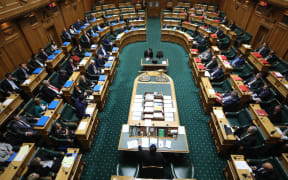By Brigitte Morten*
Opinion - In 2008, in Hamburg Germany, a conservative party (the CDU) and an environmental party (the Greens) entered in to an historical governing coalition. The agreement fell over less than three years later but this coalition is often held up as the example that environmental parties and right-wing parties can govern together.

A new centrist environment party could push the Greens below the threshold to return to parliament. Photo: 123RF
In New Zealand, talks of a new centralist environmental party has raised the question of whether it is possible here for such a party to exist. While it's still early days, talks of the party formation is already being seen by some as the National Party's pathway back to government.
To be viable, the new party will need to reach the all-important 5 percent electoral threshold and those votes have got to come from somewhere.
It has often been touted that there could be a breakaway of the popular BlueGreen movement within the National Party.
People have argued that high profile National MPs, like Nikki Kaye and Maggie Barry, could move sideways to lead this new party. There is also a growing recognition of environmental issues within the caucus - take Todd Muller's cross-party work on climate change as an example.
However, the problem with that idea was always the blue part. Any party that automatically aligns itself with the right would just cannibalise the National Party vote and would probably only garner a few new votes.
A non-aligned party will still take votes from National. However, this could be embraced as part of a longer-term strategy of building coalition partners. While Simon Bridges won't yet be drawn on whether they would do an electorate deal with a new party, it is obvious that this could be a possibility to ensure that the new party gets into parliament.
People may automatically assume that the majority of the votes would come from the green party.
But a new environmental party will need to have a strong brand to differentiate itself from the Greens.
While there are some clear distinctions to be made - they would not carry the stigma of Metiria Turei's benefit fraud or Marama Davidson's campaign to reclaim the 'c word'. However, they will need to demonstrate that they can do better on the environment than the Greens.
The Green Party was the strongest movement to emerge from the ashes of the Alliance Party, which undoubtedly accounts for why a large number of their current voters lean left.
However, the Greens have not maintained a steady vote since formation. The vulnerability of being the junior party in a governing coalition means that 2020 will be a difficult election for them. A new centrist environment party could push the Greens below the threshold to return to parliament.
The battle for the centre of the political spectrum is more likely where a new party will need to focus. They may be able to pick up some swing voters who care about environmental issues but are put off by the Greens' wider policy platform. For example, a small business owner who wants clear rivers for their kids to swim in.

Vernon Tava. Photo: Supplied
A new centrist party also provides an alternative to the 'anybody but Winston' voters - those people who are sick of Winston Peters having the ability to decide who governs. A viable centralist alternative may attract some swing voters that have traditionally leaned left, purely because they want to spread the balance of power.
The practicalities of how a pragmatic environmental party will work are difficult. Like any party that campaigns on a single issue, how do they vote in parliament on issues they didn't get a mandate for? How does a purely environmental party vote on issues like the capital gains tax or justice reform? This is one of the reasons the Hamburg agreement fell over.
The next election is more than 18 months away and this doesn't give any new party much time to get up and running. This new environmental party currently only has one confirmed interested member - Vernon Tava - and you need 500 financial members to register as a political party. This is not to mention that they will need funding and a grassroots base to allow them to mobilise in 2020.
New political parties and the ideas they bring to the political debate is good for democracy but only time will tell whether this is a viable political party rather than just wishful thinking.
*Brigitte Morten is a senior consultant for Silvereye. Prior to that she was a senior ministerial adviser to the Minister of Education in the previous National-led government, and an adviser and campaign director for Australia's Liberal Party.





